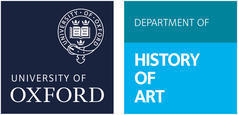The Laurence Binyon Prize: Exploring Photographic Art in Tokyo
The Laurence Binyon Prize: Exploring Photographic Art in Tokyo
By Hannah Debson, MSt History of Art and Visual Culture (2019) – January 2020
The Laurence Binyon Prize
The famous historian of Chinese art Laurence Binyon created a prize open to Oxford students of all disciplines, to encourage students to engage with the arts in other cultures. Specifically the prize enables travel to Asia or another area outside of Europe. This type of academic grant is unusual, given that it requires your topic of interest to be completely independent from any current academic projects, and as such it encourages students to follow passions and interests beyond their studies. There is a competitive application, consisting of a detailed proposed itinerary and statement of purpose, for the prize money of up to £1000 to be put towards an art-focused trip abroad. This prize is a fantastic opportunity and I would strongly encourage anyone who is interested in it to apply!
Hopefully this blog will inspire anyone who is considering applying to take the plunge!
Tokyo and Art
As one of Japan’s most vibrant urban centres, Tokyo has steadily developed as a national and international artistic hub. Although I visited a range of museums – from the dynamic installations of the Mori contemporary art museum to the delicacy of ancient Japanese craftsmanship at the Nezu Museum – the focus of my trip lay in photography.
Since the 1970s independent photography galleries began appearing across Japanese cities, spreading and accelerating in Tokyo in the 1990s. Tokyo therefore provided a fascinating entry point from which to investigate the lively and diverse mixture of fine art photographers that have taken inspiration from Japanese and urban culture.
Tokyo Photographic Art Museum
My exploration began, unsurprisingly, at the Tokyo Photographic Art Museum, a colossal building established in 1995, holding a vast collection of over 35,000 photographic works, both by international and Japanese artists. The exhibition that I visited there was titled ‘Reading Images: The Time of Photography’. This exhibition selected images from within the Museum’s collection which explored the concept of time, either visually, implicitly or through narrative. One entry by Midorikawa Yoichi used long exposure to reveal the flight path of fireflies, creating a somewhat frenetic swirl of white lines dotted across the print. This creates a sense of speed which juxtaposes against the ‘frozen’ nature of a photograph, much in the same way as famous Japanese photographer Hiroshi Hamaya’s 1931 ‘Nightscape of Ginza’.
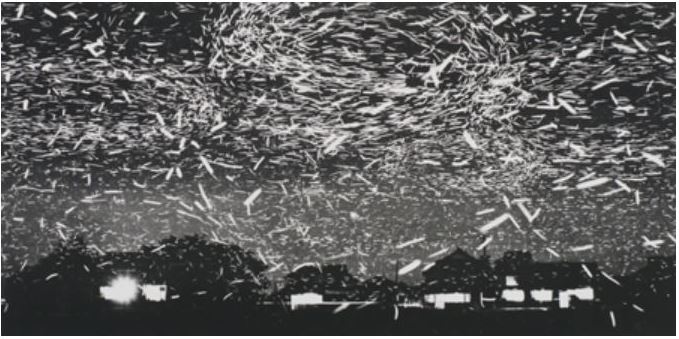
Midorikawa Yoichi, ‘Fireflies’ (1957)
Another work that proved particularly powerful in this exhibition was Taguchi Kazuna’s ‘Look how long I’ve grown waiting for you’: a set of four hazy portraits of a woman looking softly out at the viewer. On inspection of the accompanying information you learn that this woman is in fact a fictional creation, built through a lengthy production process. Kazuna first creates a woman’s face from hundreds of magazine images, then she paints the created face before photographing and printing the digital image in a dark room. The result is a soft focused image receding into the shadows, inviting the viewer to question reality, fantasy and provoking a sense of mystery.
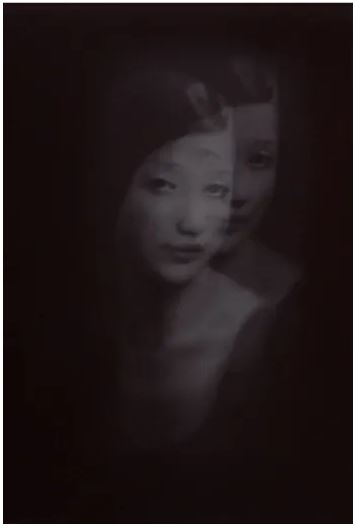
Taguchi Kazuna, ‘Look how long i’ve grown waiting for you’ (2007)
Exploring smaller galleries
Moving beyond the Tokyo Photographic Art Museum, I moved onto a host of smaller galleries, of which one of the most interesting was the Photo Gallery International. Nestled in the back streets in Higashi Azabu, this small but well-known gallery was born out of a meeting between American photographer Ansel Adams and Japanese photographer Yasuhiko Sata in the 1970s. Its single exhibition room held a range of works, where the theme of time continued to be important. For example, in Narumi Hiramoto’s print of a metronome, forever suspended by a hand that is either stopping or starting it. In stark contrast, the stoic, graphic nature of Atsuto Shimada’s architectural photography appeared to stand for simplicity and permanence, a sentiment that was front of mind when I visited Mount Fuji a few days later.
Beyond the gallery
As I moved around Tokyo I explored as many facets of its culture as I could, from the maid cafes and manga bookstores of Akihabara to the bustling streets of Shibuya to Edo Castle in central Tokyo. I also experienced an array of traditional Japanese experiences, including a tea ceremony and staying in a Ryokan (traditional Japanese inn) nestled at the base of Mt Fuji.
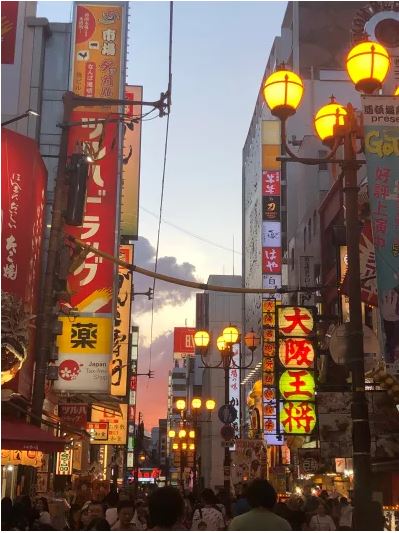
The night sky in Shibuya, Tokyo © Hannah Debson
The food became a key part of my experience, and the abundance of seafood began to dominate my culinary experience. Interestingly, it was this element of Japanese culture that may have influenced Michiko Kon’s avant-garde photography. Her fascinating, and somewhat disturbing black and white prints incorporated sea-life interspersed with human or animal segments to create obscure, dark and grotesque multimedia prints. After spending time with her work, she became one of my favourite artists on the trip.
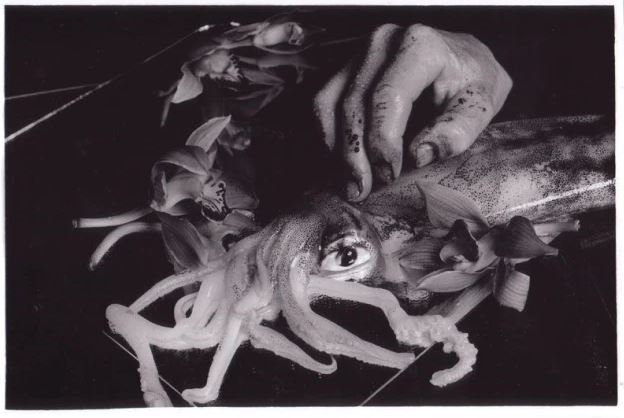
Michiko Kon, ‘Squid, Hands and Flowers’ (1991)
Tokyo’s photographic scene proved to be diverse and thoughtful, and certainly deserving of more attention. I look forward to following the careers of some of the photographic artists I discovered on my trip, and to returning to Japan again in the future.
Further information about prizes and funding can be found here.

